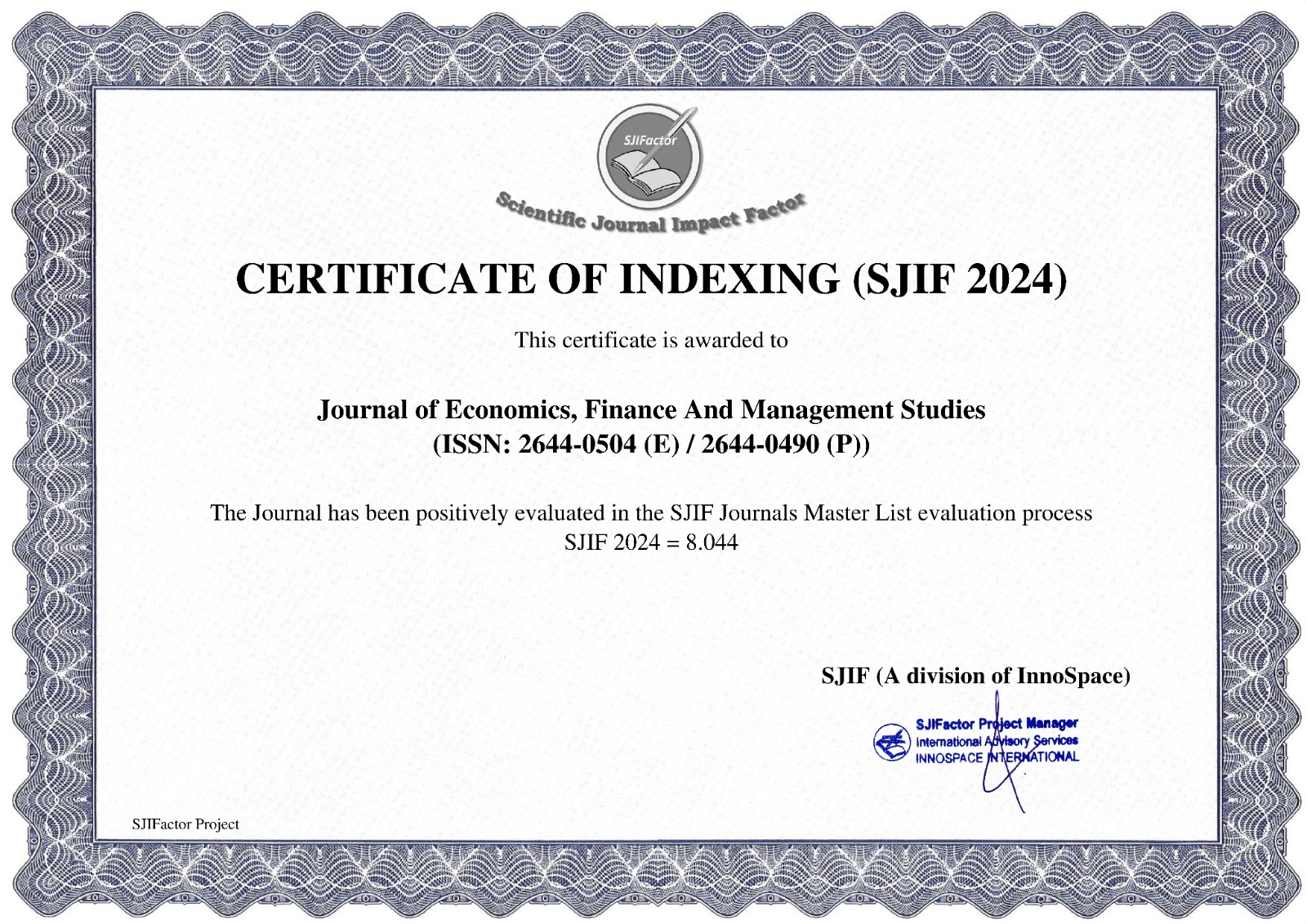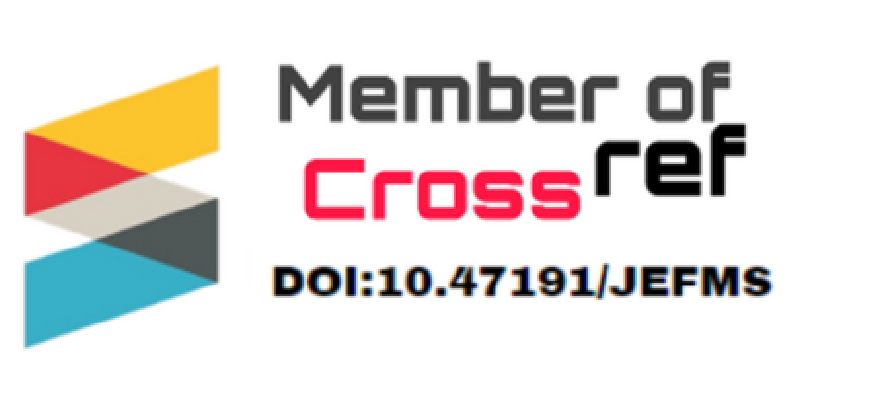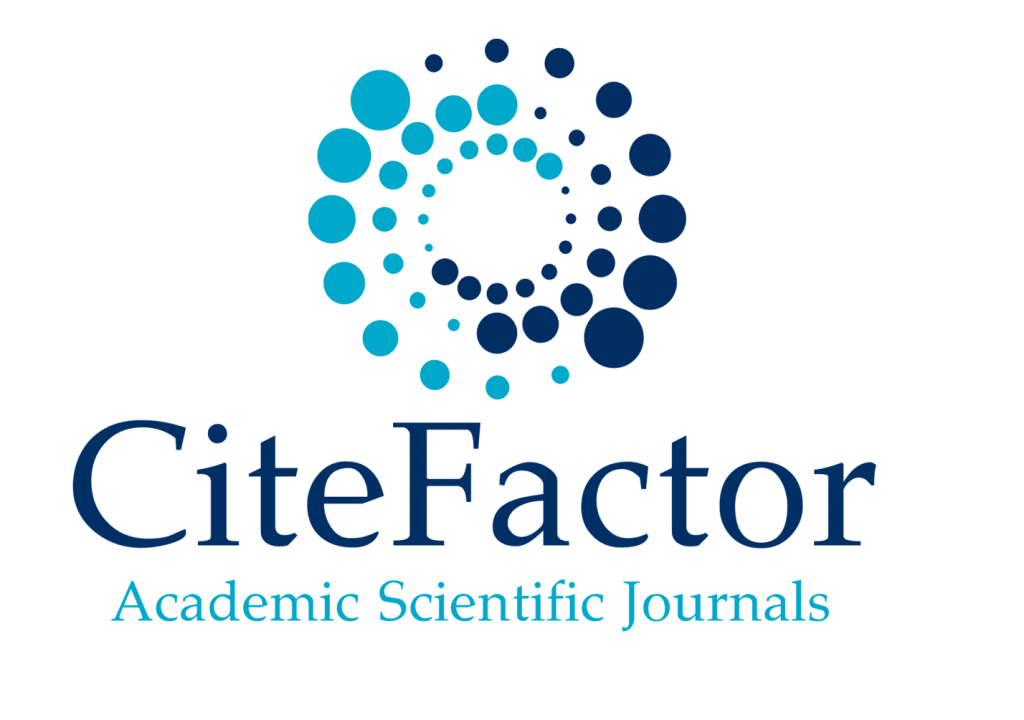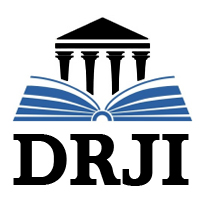The Effects of Digital Literacy, Financial Literacy, and Financial Technology on Surakarta SMEs' Sustainability Plans
1Agustin Diah Nurbaiti, 2Ahmad Sidiq
1,2STIE Atma Bhakti,Surakarta, Indonesia
https://doi.org/10.47191/jefms/v8-i3-50ABSTRACT:
The purpose of this study is to examine the relationship between the growth of SMEs in Surakarta and financial technology, digital literacy, and financial culture. At least 97 SME members must participate in the quantitative research approach. We used multiple regression to analyze the data. The analysis reveals that financial literacy and technology significantly improve SMEs' probability of success. This indicates that adopting efficient financial management, financial competence and leveraging technology can contribute to small business profitability. However, digital literacy has no noticeable impact on firm success. This may be due to a number of things, including ineffective use of digital technologies by firms or lack of access to robust digital infrastructure. According to this analysis, fintech use and digital literacy instruction need to be enhanced in order to increase the competitiveness of SMEs in Surakarta. We implore the government and pertinent institutions to give SMEs greater training and digital infrastructure so they can better handle the difficulties of the digital economy age.
KEYWORDS:
Financial Literacy, Digital Literacy, Financial Technology, Business Sustainability, MSMEs.
REFERENCES:
1) T. T. H. Tambunan, Usaha Mikro, Kecil, dan Menengah di Indonesia: Isu-isu Penting. Jakarta: Salemba Empat, 2019.
2) Badan Pusat Statistik (BPS), Klasifikasi Usaha Mikro, Kecil, dan Menengah Berdasarkan Jumlah Tenaga Kerja dan Aset. 2021.
3) E. Kusumawati, A., & Suryana, UMKM dan Stabilitas Ekonomi Nasional: Studi Adaptasi dalam Krisis Global. Bandung: Alfabeta, 2020.
4) O. J. K. OJK, UMKM dan Perannya dalam Perekonomian Nasional. 2020.
5) U. Nation, Our Common Future (The Brundtland Report). Oxford University Press., 1987.
6) E. B. Barbier, “The Concept of Sustainable Economic Development.” Environmental Conservation, vol. 14(2). 1987.
7) R. Hillary, Small and Medium-Sized Enterprises and the Environment: Business Imperatives. Greenleaf Publishing., 2000.
8) M. Schaper, “‘Small firms and environmental management.,’” Int. Small Bus. J., vol. 20(3), pp. 235–251., 2002.
9) Bank Indonesia, Survei Nasional Literasi dan Inklusi Keuangan (SNLIK). 2014.
10) V. Grana-Alvarez, J. C., & López-López, “Financial literacy and its role in promoting sustainable investment.,” World J. Adv. Res. Rev., 2022.
11) UNESCO, “Global Framework for Digital Literacy.,” UNESCO Publ., 2018.
12) S. Hague, C., & Payton, “Digital Literacy across the Curriculum: A Futurelab Handbook.,” 2019.
13) M. (2022). Suryani, U., Arief, M., Bramantoro, S., & Hamsal, “With O2O Business Adoption on the Performance of Small,” Int. J. E-bus. E-Government Stud., vol. 0744, pp. 199–223, 2022, doi: 10.34109/ijebeg.
14) Geby Citra Ananda, Annisa Ilmi Faried, and Maya Syaula, “The Effect of Financial Literacy and Financial Technology on Financial Performance (Case Study: Desa Kebun Kelapa ),” Int. J. Manag. Econ. Account., vol. 1, no. 2, pp. 81–93, 2023, doi: 10.61306/ijmea.v1i2.9.
15) J. C. Bongomin, G. O. C., & Munene, “Financial literacy and sustainability in SMEs: Do financial risk attitude, access to finance, and organizational risk-taking tolerance mediate? Journal of Small Business & Entrepreneurship.,” Journal of Vocational Behavior, vol. 45. 2022.
16) M. Kusuma, D. Narulitasari, and Y. A. Nurohman, “Inklusi Keuangan Dan Literasi Keuangan Terhadap Kinerja Dan Keberlanjutan Umkm Disolo Raya,” Among Makarti, vol. 14, no. 2, pp. 62–76, 2022, doi: 10.52353/ama.v14i2.210.
17) N. Safitri, I. Permadi, and E. Fathussyaadah, “Literasi Keuangan Digital, Keberlanjutan Usaha Industri Kecil Dan Menengah Serta Dampaknya Terhadap Kesejahteraan Keuangan,” J. Ilm. Manajemen, Ekon. Akunt., vol. 6, no. 3, pp. 1203–1214, 2021, doi: 10.31955/mea.v6i3.2478.
18) A. D. Puspitasari, N. A. Octavini, Y. Setiawan, and R. Nuraini, “Jurnal Ilmiah Manajemen Dan Bisnis Keberlanjutan UMKM Perempuan : Literasi Keuangan , Inklusi Keuangan dan Fintech Jurnal Ilmiah Manajemen Dan Bisnis,” vol. 25, no. 2, pp. 122–142, 2024.
19) E. Tan and M. Syahwildan, “Financial Technology Dan Kinerja Berkelanjutan Usaha Mikro Kecil : Mediasi Literasi Keuangan Dan Inklusi Keuangan,” J. Ilm. Manaj. dan Bisnis, vol. 23, no. 1, pp. 1–22, 2022.
20) J. Elkington, Cannibals with Forks: The Triple Bottom Line of 21st Century Business. Oxford: Capstone Publishing., 1997.
21) S. J. Huston, “Measuring Financial Literacy,” J. Consum. Aff., vol. 44, no. 2, pp. 296–316, 2010, doi: 10.1111/j.1745-6606.2010.01170.x.
22) Y. Eshet-Alkalai, “Digital Literacy: A Conceptual Framework for Survival Skills in the Digital era,” J. Educ. Multimed. Hypermedia, vol. 13, pp. 93–106, 2004.
23) M. Gomber, P., Koch, J.-A., & Siering, “Digital Finance and FinTech: Current Research and Future Research Directions.,” J. Bus. Econ., vol. 87(5), pp. 537–580., 2017.
24) J. Luo, W., & Cheng, “Transition to sustainable business models for green economic recovery: role of financial literacy, innovation and environmental sustainability.,” Econ. Chang. Restruct., vol. 56(6), pp. 3787–3810, 2023, doi: https://doi.org/10.1007/s10644-023-09512-9.
25) M. Hidayah, N., Aisyah, S., & Iqbal, “The Role of the Digital Economic Literacy Movement in Supporting MSMEs Sustainability.,” nternational J. Econ. Bus. Res., vol. 15(4), 2023.
26) D. L. Kisin and S. W. Setyahuni, “Pengaruh Literasi Keuangan, Inklusi Keuangan Dan Teknologi Finansial (Fintech) Terhadap Keberlanjutan UMKM Di Kota Semarang,” J. Ekon. Bisnis, Manaj. dan Akunt., vol. 4, no. 1, pp. 116–129, 2024, doi: 10.47709/jebma.v4i1.3478.
27) F. Hikmawati, Metodologi penelitian. 2020.
28) I. K. Swarjana, Metodologi Penelitian Kesehatan. Penerbit Andi, 2022.
29) R. Gani, L., & Amalia, Analisis Ekonometrika. Jakarta: Penerbit XYZ., 2018.
30) A. Chandrarin, “Metode Penelitian: Pendekatan Kuantitatif dan Kualitatif.,” Yogyakarta: Deepublish, 2018. [Online]. Available: https://repository.iainpare.ac.id/id/eprint/4590
31) Sugiyono, “Metode Penelitian Kuantitatif, Kualitatif, dan R&D.,” Bandung: Alfabeta, 2020.
32) E. Rosifa, D. Tomy, and D. Chayono, “Pengaruh Literasi Digital, Literasi Keuangan, dan Perilaku Keuangan dalam menghadapi Era Revolusi Industri 5.0 di Kabupaten Sumbawa dan Sumbawa Barat,” Usc, vol. 2, no. 1, pp. 103–112, 2024, [Online]. Available: https://conference.uts.ac.id/index.php/Student
33) N. A. Aulia et al., “Pasar Baru Kabupaten Bantaeng,” vol. 8, pp. 16–28, 2021, [Online]. Available: http://journal.unismuh.ac.id/
34) A. T. Amanda and N. Rialdy, “Faktor-Faktor Yang Mempengaruhi Implementasi Standar Akuntansi Keuangan Untuk Entitas Mikro, Kecil Dan Menengah Serta Dampaknya Terhadap Keberlanjutan Usaha Pada Umkm Kota Dumai,” J. Ilm. Manajemen, Ekon. Akunt., vol. 8, no. 1, pp. 1812–1829, 2024, doi: 10.31955/mea.v8i1.3916.
















